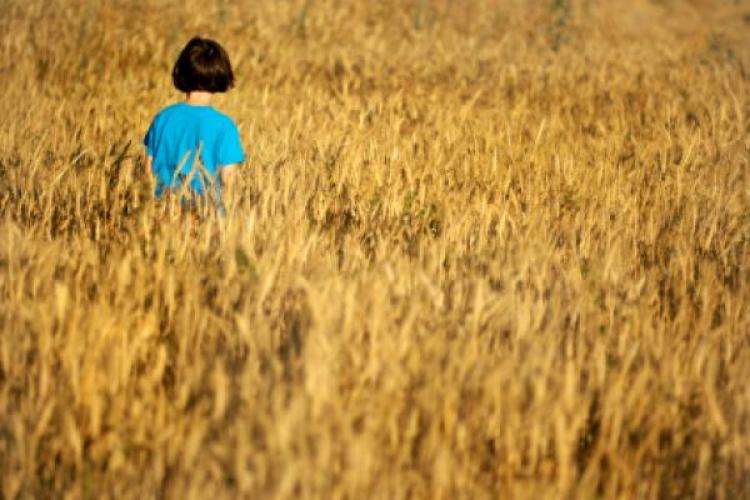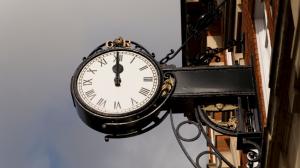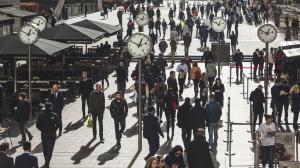
Best Comet of 2025?
C/2024 G3 (ATLAS) has already become very faintly visible to the naked eye for observers in the Southern Hemisphere.
Shavuot is a Jewish observance that follows Passover by 50 days. It is the second of three major Jewish festivals. The other two are Passover and Sukkot.

Barley and wheat make up part of the Seven Species of crops, which are symbolic of Shavuot.
©iStockphoto.com/Matan Narkiss
Many Jewish people may take a day off work, attend special prayer services in a synagogue and eat a special meal on Shavuot. There are some customs associated with the festival in some communities. These include:
Some people in Jerusalem study the Torah all night before walking to the Western Wall (Kotel, Kosel) for morning prayers. Some synagogues in the United States also hold confirmation celebrations for young adults.
Shavuot is a public holiday in Israel. It is not a federal public holiday but it is observed among Jewish communities in countries such as Australia, Canada, the United Kingdom or the United States. Many Jewish businesses and organizations are closed or have restricted opening hours. Some Jewish people may also choose to take some of their annual leave at this time.
On the 50th day after the Israelites left Egypt and were in the wilderness around Mount Sinai, God presented Moses with the Torah, or Ten Commandments. In accepting these, the Israelites became a nation committed to serving God and Shavuot marks the anniversary of this event. There are similarities between Shavuot and the Christian festival of Pentecost. Pentecost, or Whitsun, is 49 days after Easter Sunday and celebrates the descent of the Holy Spirit onto Jesus' followers.
The period between Passover, when Jewish people celebrate their liberation from slavery in Egypt, and Shavuot, is known as the Counting of the Omer. This marks a period of spiritual preparation before the Torah is received. In the time of the Temple in Jerusalem, Jewish people offered a sacrifice of an omer (a measure) of barley in the temple on each of the 49 days after Passover. On the 50th day, known as Shavuot, they offered wheat at the temple. In modern times, Jewish people remember this during the Counting of the Omer by counting the number of days since Passover each night after sundown. They may use scrolls, tear-off calendars, magnets, pin boards, mobile telephone SMS reminders or email services to help them to remember to do this.
An important symbol of Shavuot is the Bikkurim, or first fruits. This was a basket of gold or silver that contained the first harvest of the Seven Species crops and was carried to the Temple in Jerusalem in a procession accompanied by music. These crops are: barley; dates; figs; grapes; olives; pomegranates; and wheat. Modern versions of the Bikkurim may include other crops now grown in Israel or other Jewish communities around the world. Images of the Ten Commandments inscribed on stones or scrolls representing the Torah are also symbolic of Shavuot.
Note: Many Jewish holidays begin at sundown the day before the date specified for the holiday.
In the Jewish diaspora—Jewish communities outside of Israel—an extra day is usually added to religious observances, with the exception of Yom Kippur, which lasts only one day worldwide, and Rosh Hashana, which is celebrated over two days in both Israel and the diaspora.
This custom has its roots in ancient times when the beginning of the months in the Jewish calendar still relied on the sighting of the crescent Moon following a New Moon.
The beginning of a new month was determined by the Sanhedrin, the supreme court of ancient Israel in Jerusalem. Once the date was published, messengers were dispatched to spread the news among Jews living abroad. Since this process took some time, it was decreed that Jews outside of ancient Israel were to observe every holiday for 2 days to make sure that the rules and customs applicable to each holiday were observed on the proper date. This rule is still observed today.

C/2024 G3 (ATLAS) has already become very faintly visible to the naked eye for observers in the Southern Hemisphere.

How does the 12-hour clock system work? Is midnight 12 am or 12 pm?

Why do many countries set the clocks back and forth an hour twice a year?

Why are there 12 months? How long are they, and what do the month names mean?